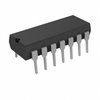-
A good PCB layout for the LT1014ACN involves keeping the input and output traces short and separate, using a solid ground plane, and placing the bypass capacitors close to the device. A 4-layer PCB with a dedicated power plane and a dedicated ground plane is recommended.
-
To ensure stability, make sure to follow the recommended compensation network, use a minimum output capacitance of 10uF, and avoid capacitive loads. Also, ensure that the input voltage is within the recommended range and the device is operated within its specified temperature range.
-
The maximum power dissipation of the LT1014ACN is dependent on the package type and the ambient temperature. For the N-8 package, the maximum power dissipation is 1.4W at 25°C ambient temperature. However, it is recommended to derate the power dissipation based on the ambient temperature and the thermal resistance of the package.
-
Yes, the LT1014ACN can be used as a voltage regulator. However, it is not a dedicated voltage regulator and is primarily designed as an op-amp. It can be used as a voltage regulator in applications where a simple, low-power voltage regulator is required.
-
The input impedance of the LT1014ACN is typically around 1MΩ, but it can vary depending on the frequency and the input voltage. It is recommended to use a buffer stage or a voltage follower configuration to minimize the input impedance and ensure stable operation.
 LT1014ACN#PBF datasheet
by Linear Technology
LT1014ACN#PBF datasheet
by Linear Technology